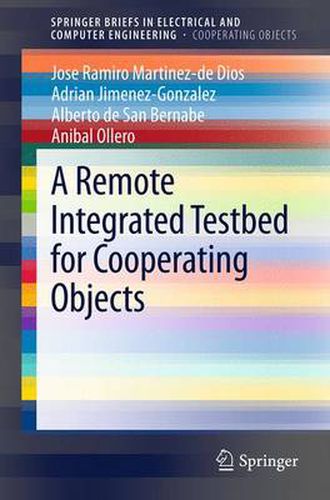Readings Newsletter
Become a Readings Member to make your shopping experience even easier.
Sign in or sign up for free!
You’re not far away from qualifying for FREE standard shipping within Australia
You’ve qualified for FREE standard shipping within Australia
The cart is loading…






This title is printed to order. This book may have been self-published. If so, we cannot guarantee the quality of the content. In the main most books will have gone through the editing process however some may not. We therefore suggest that you be aware of this before ordering this book. If in doubt check either the author or publisher’s details as we are unable to accept any returns unless they are faulty. Please contact us if you have any questions.
Testbeds are gaining increasing relevance in research domains and also in industrial applications. However, very few books devoted to testbeds have been published. To the best of my knowledge no book on this topic has been published. This book is particularly interesting for the growing community of testbed developers. I believe the book is also very interesting for researchers in robot-WSN cooperation.
This book provides detailed description of a system that can be considered the first testbed that allows full peer-to-peer interoperability between heterogeneous robots and ubiquitous systems such as Wireless Sensor Networks, camera networks and pervasive computing systems. The system architecture includes modules that allows full bidirectional communication between robots and WSN. One robot can
The book describes the current state of the art in development of testbeds integrating Cooperating Object technologies. It describes in detail the testbed specification and design using requirements extracted from surveys among experts in robotics and ubiquitous systems in academia and industry. The book also describes the testbed novel architecture and its hardware and software components. Moreover, it includes details on user support tools to facilitate its use such as remote use using a virtual private network and sets of functionalities of interest for members from the robotics, WSN and robot-WSN communities. Finally, the book illustrates its capabilities and potentialities describing the implementation of some of the experiments that have been performed. Examples from the robotics, WSN and robot-WSN communities are described.
$9.00 standard shipping within Australia
FREE standard shipping within Australia for orders over $100.00
Express & International shipping calculated at checkout
This title is printed to order. This book may have been self-published. If so, we cannot guarantee the quality of the content. In the main most books will have gone through the editing process however some may not. We therefore suggest that you be aware of this before ordering this book. If in doubt check either the author or publisher’s details as we are unable to accept any returns unless they are faulty. Please contact us if you have any questions.
Testbeds are gaining increasing relevance in research domains and also in industrial applications. However, very few books devoted to testbeds have been published. To the best of my knowledge no book on this topic has been published. This book is particularly interesting for the growing community of testbed developers. I believe the book is also very interesting for researchers in robot-WSN cooperation.
This book provides detailed description of a system that can be considered the first testbed that allows full peer-to-peer interoperability between heterogeneous robots and ubiquitous systems such as Wireless Sensor Networks, camera networks and pervasive computing systems. The system architecture includes modules that allows full bidirectional communication between robots and WSN. One robot can
The book describes the current state of the art in development of testbeds integrating Cooperating Object technologies. It describes in detail the testbed specification and design using requirements extracted from surveys among experts in robotics and ubiquitous systems in academia and industry. The book also describes the testbed novel architecture and its hardware and software components. Moreover, it includes details on user support tools to facilitate its use such as remote use using a virtual private network and sets of functionalities of interest for members from the robotics, WSN and robot-WSN communities. Finally, the book illustrates its capabilities and potentialities describing the implementation of some of the experiments that have been performed. Examples from the robotics, WSN and robot-WSN communities are described.